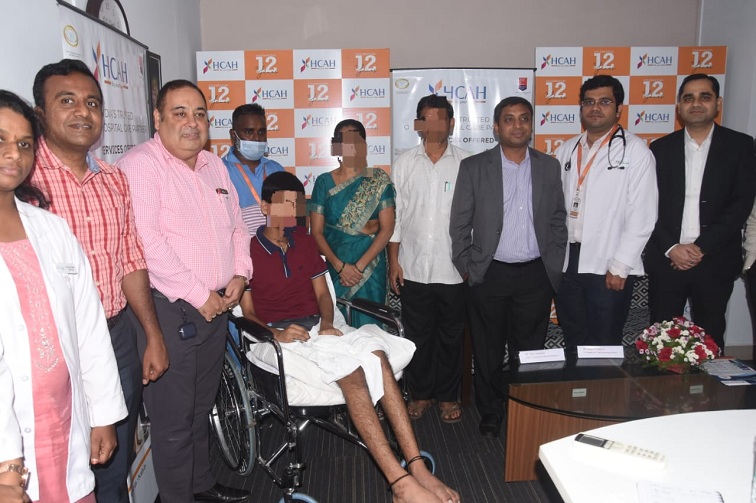Repo Rate Unchanged at 6.5%: Real Estate Sector shared its views
The Reserve Bank of India (RBI), in its Monetary Policy Committee (MPC) meeting, announced that the repo rate will remain steady at 6.5%, as revealed by Governor Shaktikanta Das on Friday, December 6, 2024. This marks the 11th consecutive instance where the repo rate has been left unchanged. Additionally, the RBI has reduced the cash reserve ratio (CRR) by 50 basis points, bringing it down to 4%. The real estate sector has also expressed its views on these decisions.
Manoj Gaur, CMD of Gaurs Group and Chairman of CREDAI National
We once again applaud the RBI move to keep the repo rate unchanged. Given that retail inflation climbed to 6.21% in October, surpassing the RBI’s target range for the first time in a year, the decision by MPC to maintain the status quo on the repo rate is a welcome move. The move showcases the central bank’s commitment to bolster growth, which ultimately will also benefit the real estate sector. The sector is doing good all over the country and this move will definitely keep the bull run continue in real estate.
Pradeep Aggarwal, Founder & Chairman, Signature Global (India) Ltd
The Apex Bank’s decision to maintain the repo rate at 6.5% reflects a balanced and prudent approach to sustaining economic stability while fostering growth. This continuity provides a stable environment for the real estate sector, enabling developers to plan with confidence and homebuyers to benefit from favorable borrowing costs.
However, a rate cut in the future could infuse much-needed liquidity into the real estate sector, accelerating growth and enhancing accessibility for buyers. As India continues to experience robust economic activity, this stable monetary stance will act as a catalyst for long-term growth and investment across industries.”
Amit Modi, Director County Group
The decision to keep the repo rate unchanged by RBI will help the real estate sector continue with its upward trajectory. Despite some inflationary concerns, the current move speaks of India’s resilient growth and resurgent economy. Further, a 50 bps cut in CRR, also announced by RBI, will free up Rs 1.16 lakh crore liquidity for the banks and increase the money supply. It will boost the country’s growth, enabling the real estate sector to scale new heights.
Sandeep Chhillar, Founder and Chairman of Landmark Group
Keeping the repo rate unchanged at 6.5 percent doesn’t come as a surprise. However, the reduction in the existing repo rate would have been a great push for fence-sitters planning to take loans anticipating lower EMIs. The housing segment is witnessing exceptional growth numbers across cities, especially for the luxury housing segment. Keeping in mind the high demand and strengthened market sentiments, the realty sector is likely to sustain high growth momentum for the coming year.”
Mohit Kalia, Vice President (Sales) Raheja Developers
The RBI’s decision to keep the repo rate unchanged at 6.5% is once again a remarkable step for the sector. This stability is important as it affects consumers’ purchasing power and equally affects the sector’s growth. Also, it shows the government is considerate of buyers’ sentiments and expectations and supports the sector’s overall growth, significantly contributing to India’s GDP and future growth prospects. Thus, the sector shall once again reap its benefits.
Sanjeev Arora, Director 360 Realtors
By keeping the repo rate steady at 6.50% for one more time, the RBI has once again provided relief to both homebuyers and developers. The real estate sector continues to thrive, with growing interest in mid-range, premium, and luxury housing segments. This positive move is expected to maintain the sector’s upward momentum, benefiting all stakeholders involved.
Prateek Tiwari, Managing Director, Prateek Group
Keeping the inflation in view, the RBI has maintained the repo rate at 6.5% for the 11th consecutive time. The decision fosters stability amid the rise in housing demands. Besides, less volatility in the loan rates would instil greater confidence in the buyers and developers, welcoming long-term growth. We remain optimistic that this continued support will propel the rising demand in the real estate market, leading to lower rate cut in the future.”
Kushagra Ansal, Director Ansal Housing
The RBI’s decision to maintain the repo rate at 6.5% is a commendable move for the real estate sector. With the economy demonstrating strong performance, supported by robust GDP growth and controlled inflation, the sector is poised for continued success.
Rajjath Goel, Managing Director, MRG Group
The RBI’s decision to hold the repo rate at 6.5% is a significant enabler for the real estate sector. Stable borrowing costs bolster buyer confidence in high-value investments, especially in emerging luxury hubs like Gurugram. This move supports a sustainable growth trajectory for developers, encouraging innovation and premium offerings tailored to the evolving aspirations of discerning clients.
Saurab Saharan, the Group Managing Director of HCBS Developments
RBI’s decision to maintain the repo rate at 6.5% is expected to bring favorable growth to the housing market. Despite rising housing expenses, unchanged home loan rates provide relief to potential home buyers. As a result, stable interest rates benefit both buyers and developers, boosting confidence and investment in the sector. The RBI’s decision is poised to encourage the launch of new projects and support development in emerging areas of interest.”
Uddhav Poddar, CMD, Bhumika Group
While the RBI’s decision to maintain the status quo shows stability, the real estate industry would definitely benefit from a rate cut as the repo rate influences housing affordability and loan repayment terms, which is directly connected to the real estate sectors momentum.
Yash Miglani, MD of Migsun Group
The real estate sector continues to exhibit positive growth. Consumption is increasing, and more people are investing in the mid, premium, and luxury residential segments not just in metro cities but also in Tier 2 and Tier 3 cities. Developers, on their part, have accelerated the pace of new launches, as reflected in reports from recent quarters. India is firmly on the path of progress, and the Reserve Bank of India’s decision to keep the repo rate unchanged will further motivate the sector. This move will also provide relief to borrowers by ensuring that their EMIs do not increase”.
Mr. Sanchit Bhutani, MD, Group 108
The RBI’s move to maintain the repo rates reflects a thoughtful approach to balancing inflation control with economic growth, a key factor for the real estate sector. Keeping the SDF and MSF rates unchanged reinforces market stability, while the FY25 inflation forecast of 4.5% signals the central bank’s positive outlook. However, the surge in metal prices could pose inflationary challenges. This stable monetary environment is expected to boost growth in commercial and retail real estate. We are confident that this consistency will sustain demand in overall sectoral growth.”
Ambika Saxena, Director, Corporate Communications, Bayside Corporations
The RBI’s decision to keep the repo rate unchanged at 6.5% is a welcome move for the real estate sector. Stability in borrowing costs ensures continued momentum in both residential and commercial segments, particularly as homebuyers and developers alike look for predictability amidst evolving market dynamics. This policy stance will further boost confidence, encouraging long-term investments in real estate
Neeraj Sharma, MD, Escon Infra Realtor
By holding the repo rate steady, the RBI has provided a predictable framework for borrowing costs, which is crucial for financial stability and market confidence. This decision is particularly significant for the real estate sector, as it keeps home loan rates competitive, making housing more accessible for end-users and driving demand in the residential segment. Additionally, the stability in rates supports developers in managing project financing efficiently, encouraging timely project completions and new launches. Such a balanced approach strengthens the sector’s ability to cater to India’s growing housing needs while contributing to the broader economic growth trajectory.
Harsh Gupta, CEO of Sundream Group
The RBI’s decision to keep the repo rate steady at 6.5% provides a much-needed stability to the real estate market. This consistency ensures home loan interest rates remain manageable, which is crucial for sustaining demand in the residential segment. Furthermore, the neutral policy stance signals confidence in the current economic trajectory, offering a boost to investor sentiment in commercial real estate. Developers can now focus on launching projects without the immediate concern of fluctuating borrowing costs, potentially accelerating project pipelines and enhancing market supply.
SKA Group Director Sanjay Sharma
RBI has once again met buyers’ expectations by keeping the repo rate stable at 6.50% for nearly two years. After the last Monetary Policy Committee meeting, we were expecting a rate cut based on the RBI’s stance. However, this decision will not only keep interest rates stable for potential buyers but also maintain public confidence. This is a welcome move by the RBI, and we hope that the rapid growth in the real estate sector will continue. This decision will benefit both buyers and developers. Additionally, the 50 basis points reduction in the CRR will increase liquidity in the market, which, in turn, will indirectly benefit the real estate sector.”
Ravindra Gandhi, Managing Director of Tirasya Estates
The RBI’s move to maintain the repo rate and adopt a neutral stance brings positive news for the real estate sector, offering advantages for both homebuyers and developers. This decision aligns with a period of revitalization in the industry, marked by regional growth and improved offerings. It reflects economic stability in India, even in the face of global uncertainties. Additionally, the unchanged rate opens the possibility for future reductions, inspiring greater confidence.
Ajendra Singh, Vice President of Sales and Marketing at Spectrum Metro
RBI has kept the repo rate unchanged at 6.5% for the 11th consecutive time. The central agency has made this decision considering inflation. However, in our opinion, the agency could have considered revising the rate by up to 25 basis points, as it would have further supported the economy. The Indian economy is expected to grow at a rate of 7% in FY25, making it one of the fastest-growing markets at a time when global growth is mostly sluggish. A reduction in CRR will bring liquidity into the market. This is bound to lead to a market rally.
Ashwani Kumar, Pyramid Infratech
The sector has long experienced a surge in demand for high-end properties. Keeping the repo rate unchanged at 6.5% will further boost the sector’s growth to new heights, strengthening both commercial and residential segments and opening the gateway for developers to launch projects in emerging areas of interest. The decision also shows the government’s consideration of buyers’ sentiments, paving the way for increased sales. We look forward to sustained buyer interest in the sector and enable bankers and financial institutions to come up with lucrative offers.”
Piyush Kansal, Executive Director of Royale Estate Group –
As widely anticipated, the RBI decided to keep the repo rate unchanged for the 11th consecutive time. This stability continues to create supportive growth for both buyers and developers, encouraging greater investments. The decision is also in line with the sector’s growth in tier 2 and 3 cities. Moreover, as property prices have steadily increased, the unchanged interest rates will not only facilitate easier access to financing but also inspire developers to launch new projects, ultimately fostering growth and innovation in the sector.
Manit Sethi, Director, Excentia Infra
The real estate sector has always contributed to the country’s economy. Though we were expecting the rate cut of 25 basis points, but keeping the repo rate unchanged for the 11th time will prove favourable amidst India’s resilient economic growth. Particularly, as luxury housing gains momentum in tier 2 cities, this steadiness will stabilize the loan rates and sustain buyers’ interest in the sector. On the other hand, the decision to cut CRR by 50bp will facilitate liquidity in the market, further strengthening the sector’s growth. Additionally, it is a huge step towards easing the financial strain on prospective buyers. Given real estate’s sensitivity to price fluctuations, the RBI’s steady approach is expected to provide a valuable boost to the industry.
Salil Kumar, Director – Marketing & Business Management, CRC Group
The RBI’s decision to keep the repo rate unchanged aligns with the sector’s growth. As the sector sees rising demand in the residential and commercial segment, the decision will encourage buyers to proceed with investing in properties without fearing rising loan interest rates. The decision also coincides with the growth of luxury housing, providing much-needed relief to potential buyers. We believe this stability will likely enhance buyer interest in luxury real estate, motivating developers to create more projects.
Prakash Mehta, the Chairman and Managing Director of Ocus Group,
For the 11th consecutive time, RBI has maintained the sector’s confidence by keeping the repo rate unchanged. In addition, the decision to cut CRR by 50bps has instilled greater confidence in the commercial sector. The lower interest rates will bring more prospective investors and businesses to the sector. This decision not only alleviates financial concerns but also demonstrates the authorities’ commitment to controlling inflation. We commend this prudent move and its positive impact on the market, which will continue creating attractive investment opportunities for buyers across the sector.
Gurpal Singh Chawla, MD, TREVOC
We welcome the RBI’s decision to maintain the repo rate at 6.5% for the eleventh consecutive time. While this is the highest rate since April 2016, it highlights a commitment to stability, especially given inflationary pressures that exceeded expectations in October. This stability is crucial for fostering the country’s economic growth and benefitting the real estate sector. Looking ahead, we remain optimistic about a potential rate cut in February next year as the RBI’s stance on maintaining the status quo approaches the two-year mark. While it will make home loans cheaper for home buyers, lending rates for developers, too, would come down. Even a minor rate cut of 25 basis points will act as a major psychological booster for real estate
Dr. Gautam Kanodia, Founder of KREEVA and Kanodia Group
The RBI’s decision to keep the repo rate unchanged will bode well for the realty sector as it will continue facilitating stability in the realty market. For home buyers, it will enable sustained affordability in home loans, further propelling the housing demand across segments. The decision of unchanged repo rate is a significant step towards the economic balance propelling the long-term growth in the real estate market
Prateek Mittal, ED, Sushma Group
The RBI’s decision to keep the repo rate unchanged was largely on the expected lines. As tier 2 and 3 cities witness an upsurge in property sales, the move is in sound with the real sector’s growth. Meanwhile, a 50bps cut in CRR will foster liquidity in the market and enhance the sector’s performance. As loan rates remain favorable, we look forward to the authorities continuing this momentum in the coming announcements
Pawan Sharma, MD, Trisol RED
The RBI’s steadfast approach to maintaining the repo rate at 6.5% reflects its commitment to ensuring economic stability amidst global uncertainties. This consistent policy not only helps in mitigating inflationary pressures but also fosters a conducive environment for sustained economic growth. A stable interest rate environment encourages confidence among investors, promotes steady inflows of capital, and provides the real estate sector with the predictability required for long-term planning. This decision will continue to support housing affordability and drive the momentum of infrastructural and urban development across the country.”
Nandni Garg, Director, Rajdarbar Ventures
The neutral stance adopted by the RBI sends a strong signal of resilience and balance in monetary policy. By keeping the repo rate unchanged, the central bank ensures that borrowing costs remain stable, which is a significant relief for homebuyers. This continuity supports sustained growth in the real estate sector by enabling developers to plan their projects with clarity, while aligning consumer aspirations with affordable financing options. For homebuyers, stable home loan interest rates mean enhanced affordability and the confidence to invest in their dream homes, further fueling demand in the residential market.”






